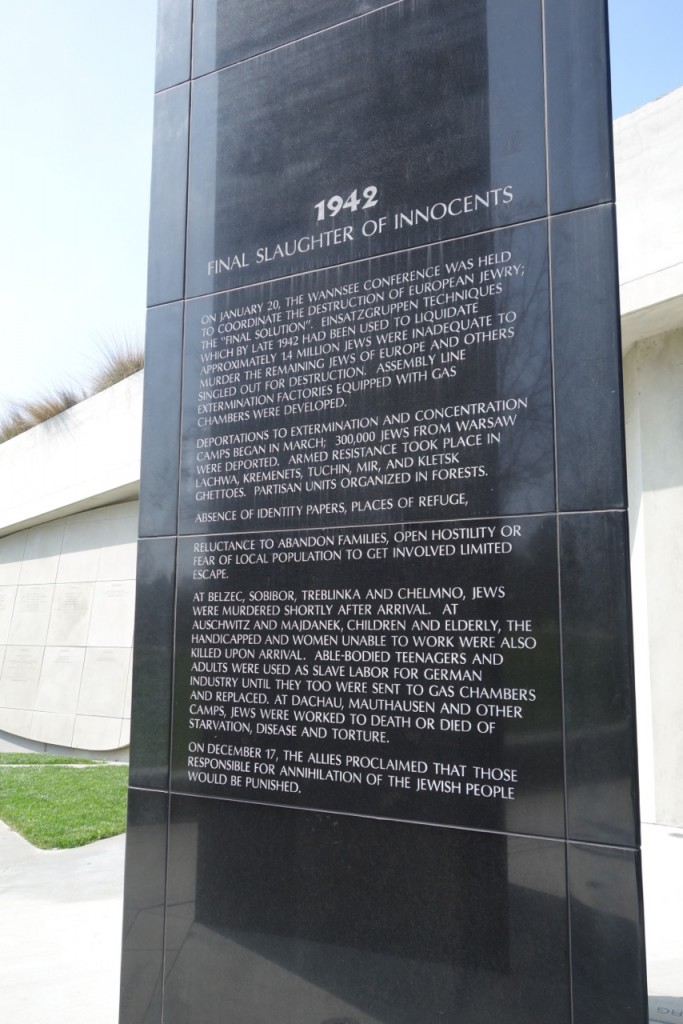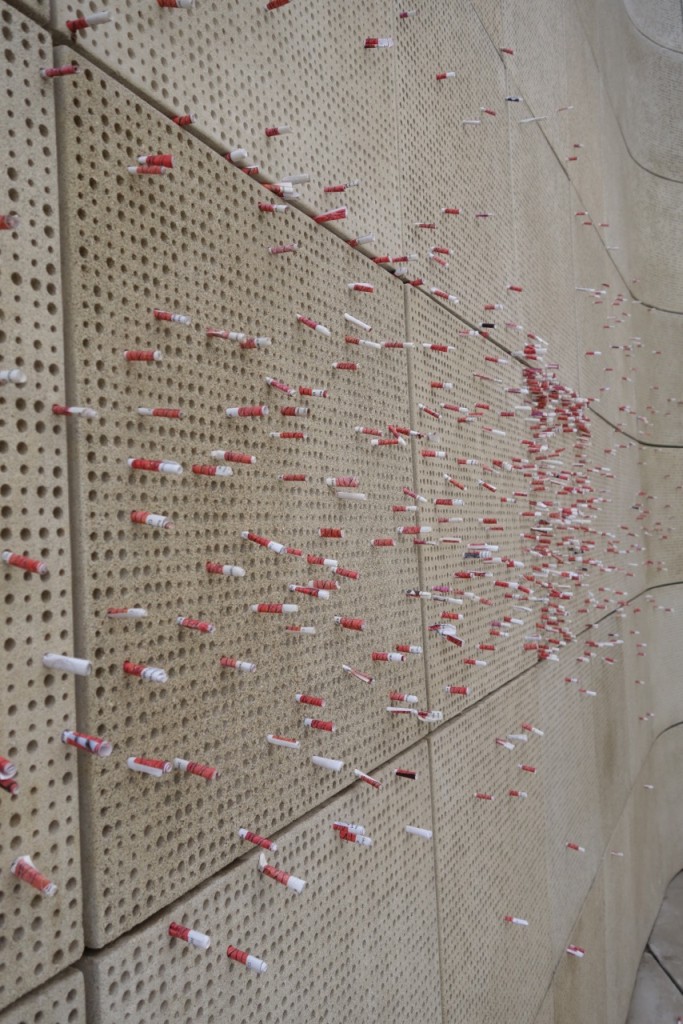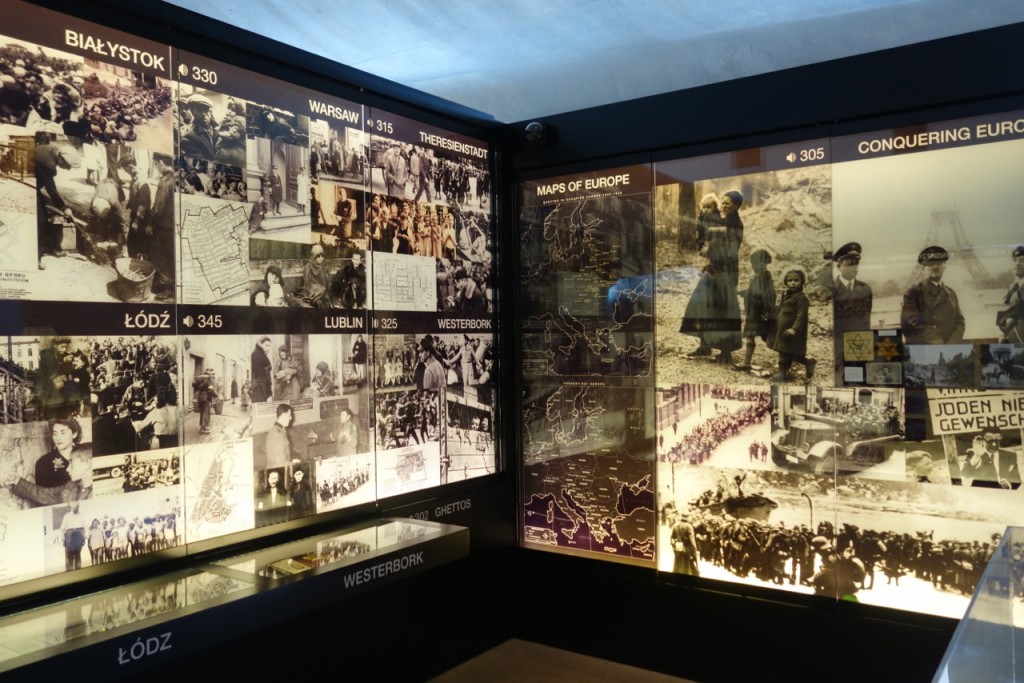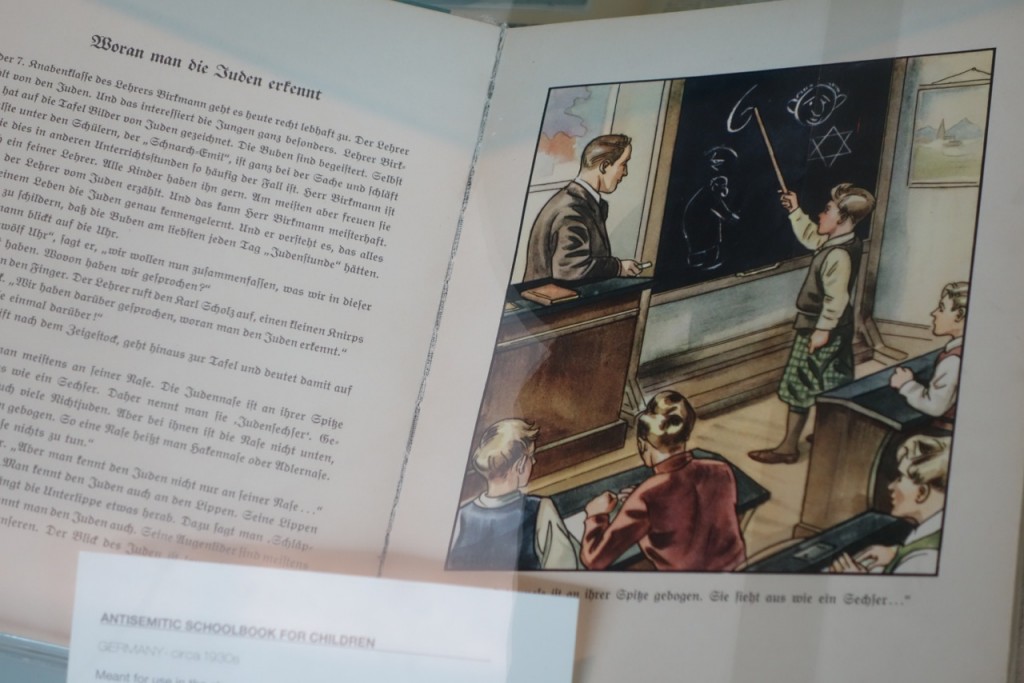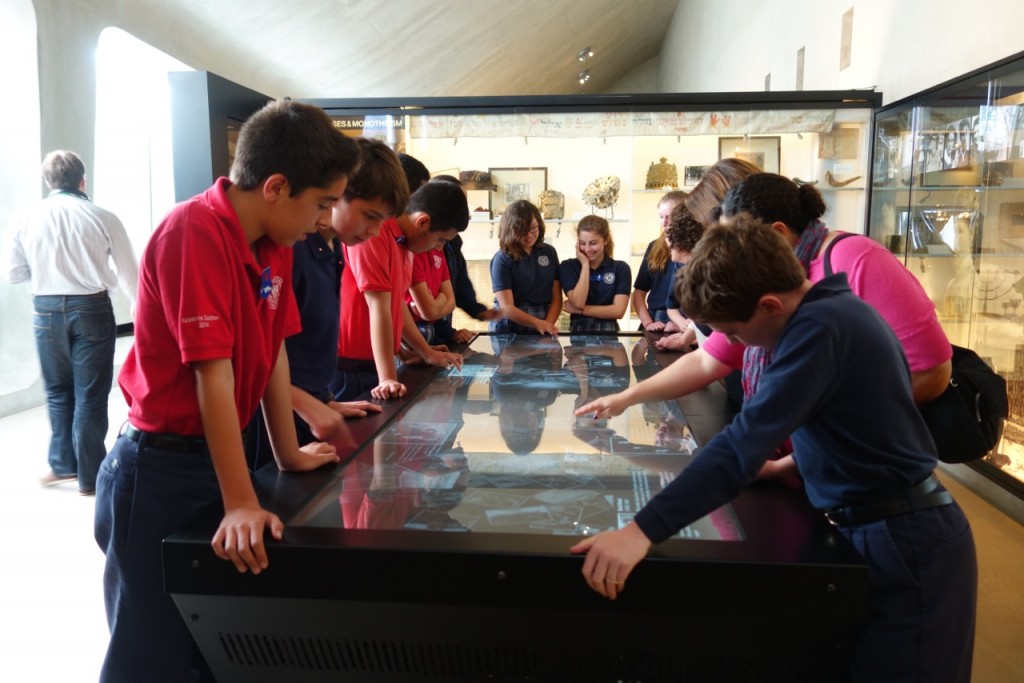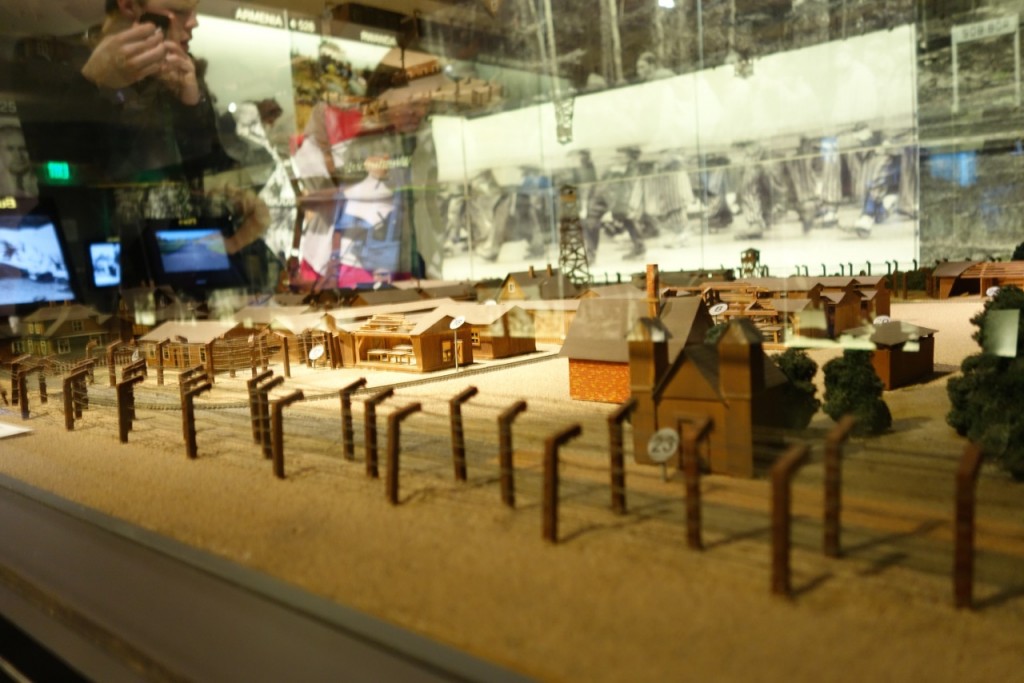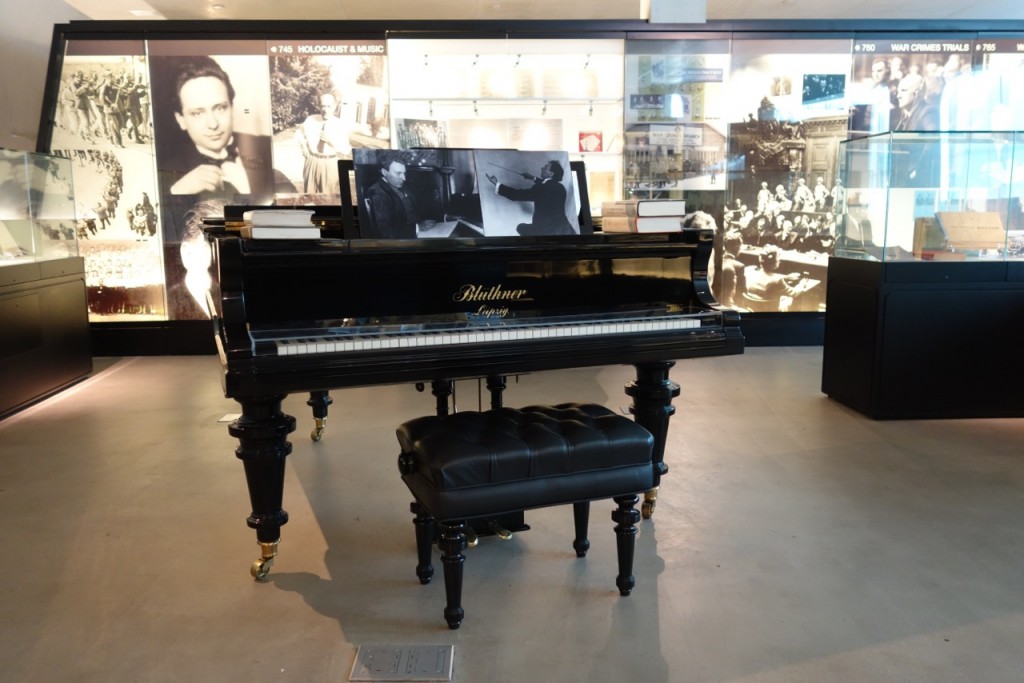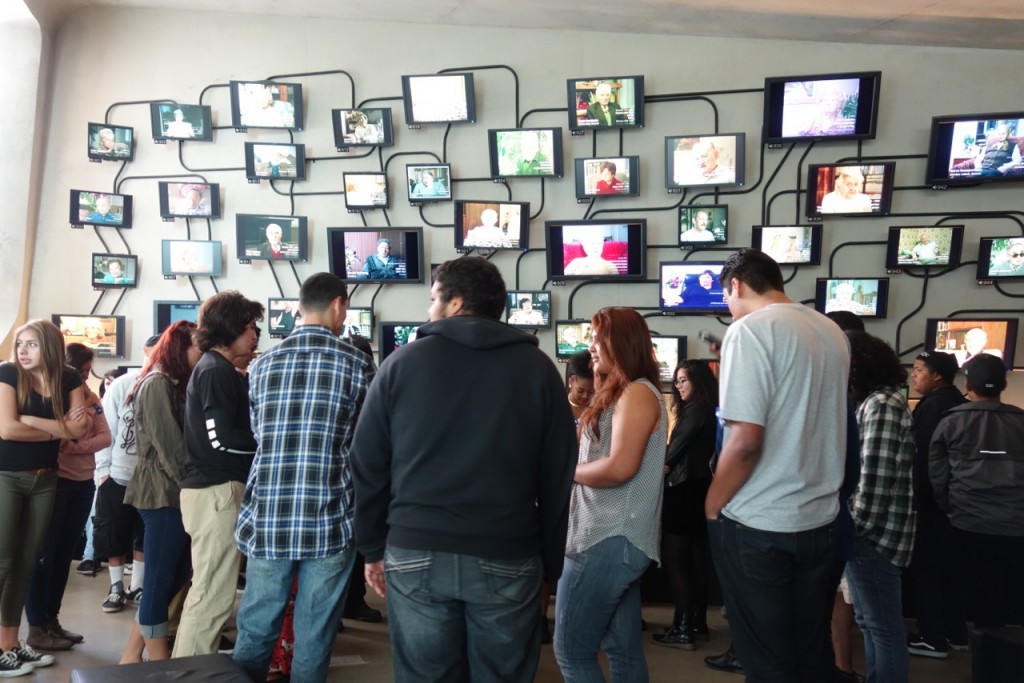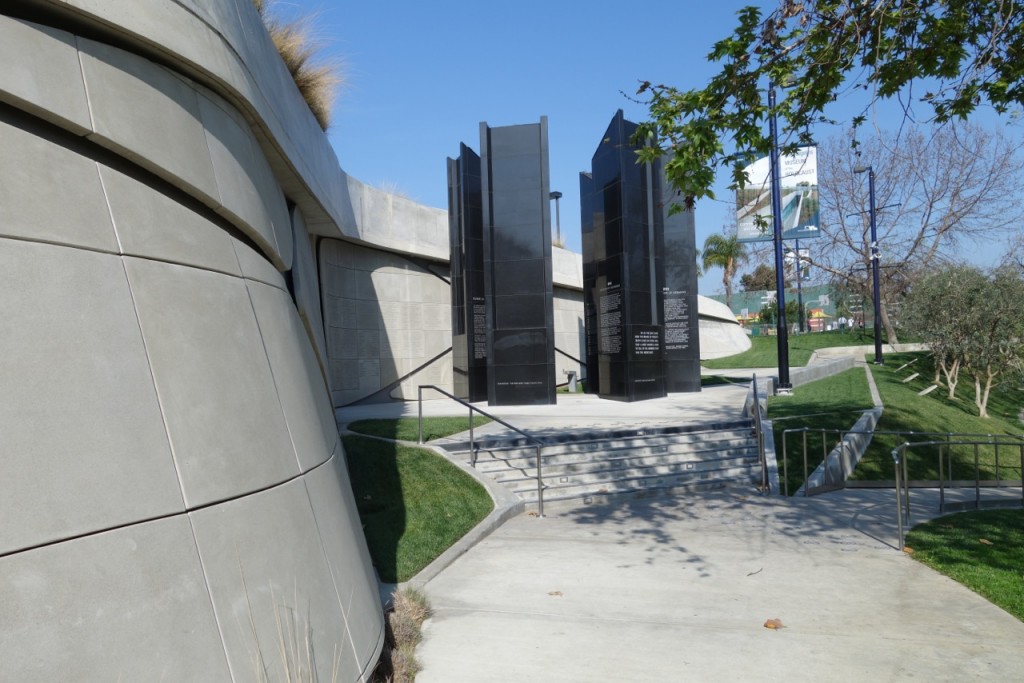
A remarkable community, exiled from Europe before and during and after Hitler’s reign, immigrated to Los Angeles and made lives for themselves. The Los Angeles Museum Of The Holocaust (LAMOTH) — hidden in Pan Pacific Park directly next to the Grove — is a discreet and powerful institution that has not only been built by this group of survivors to bears witness to their own stories, but makes a point to tell the story of Los Angeles (and her many immigrant citizens) from then until now.
A recent NYTimes article by Edward Rothstein remarks that many museums struggle to tell a coherent story from the items presented within their walls. But in the case of LAMOTH, the Holocaust story is an undeniably powerful narrative that draws visitors along a coherent and focused path. What’s unique about this tiny museum is that it takes such care to demonstrate how Los Angeles – and by proxy, the rest of the world — reacted to the gradual unraveling of the truth about the camps and the Nazi’s treatment of the Jews. LAMOTH expands out from the Jewish experience to encompass other human rights abuses, and seeks to inspire all of us to make the world a better place.
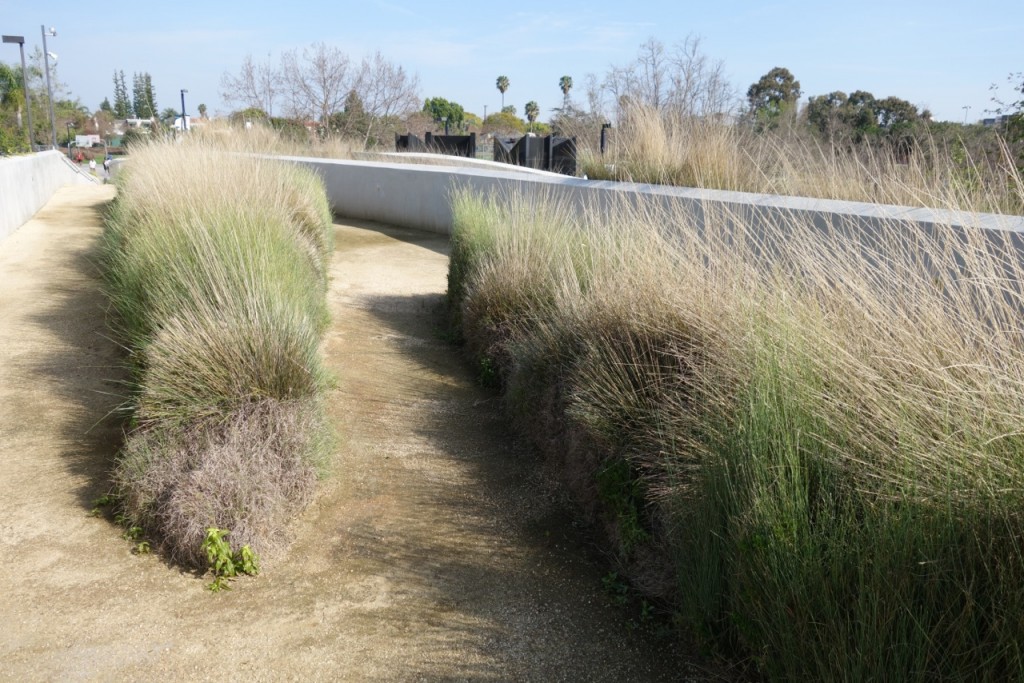
This relatively unknown LA gem is hidden under a graceful hillside design, and is completely FREE to the public. Designed by Hagy Belzberg, it has been featured in CNN’s “11 Coolest Buildings in America” and won several architectural awards for its green roof (see the grasses atop the structure), as well as high marks for an unconventional interior design that organically helps to tell the story of this group of people by taking visitors from the present, into the dark tale of the extermination of 6 million Jews, and back into the light of “normalcy and illumination.”
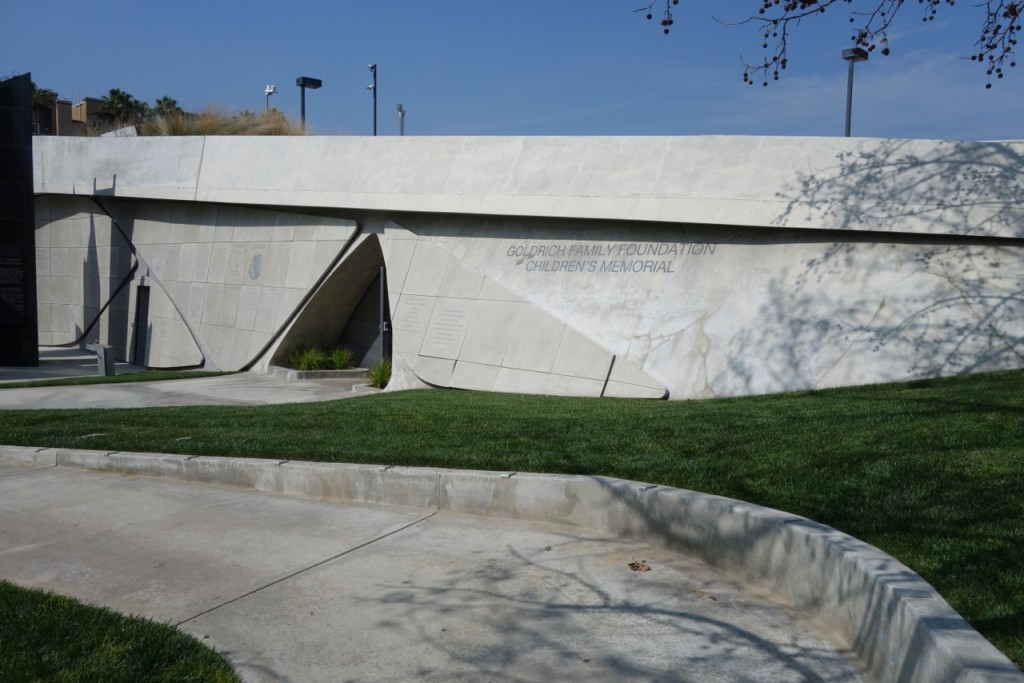
After exploring the grassy roof, visitors can duck inside the open-to-the-sky Children’s Memorial, and write a wish on a piece of paper and stick it into one of the 1.2 million slots in the wall – that number represents the number of children who perished in the Holocaust and is an immediate, visual reminder of the tragedy.
Copious images and relics depict the lives of the Jewish communities before the population was displaced. While some images are tough to look at, expressing the simple humanity of this population is perhaps the museum’s most powerful accomplishment. The pure numbers are astounding – from the sheer volume of the communities torn asunder, to an accounting of each camps to which people were sent, to the numbers of people (and children) who perished. Visitors can follow the stories of individuals affected by the Holocaust through printed guides available at the reception desk. These guides introduce visitors to an actual victim and directs visitors to the Museum artifacts & documents related to that person’s story. The Audio Guides are interactive and provide in-depth access to artifacts and events and are available in both English and Spanish.
It’s particularly intriguing to see how the story was tracked in the Los Angeles Times; highlighted news about the Nazis appears first in the lower segments of pages, is finally splashed across \ the main headlines, and then disappears back to lesser sections of the newspaper.
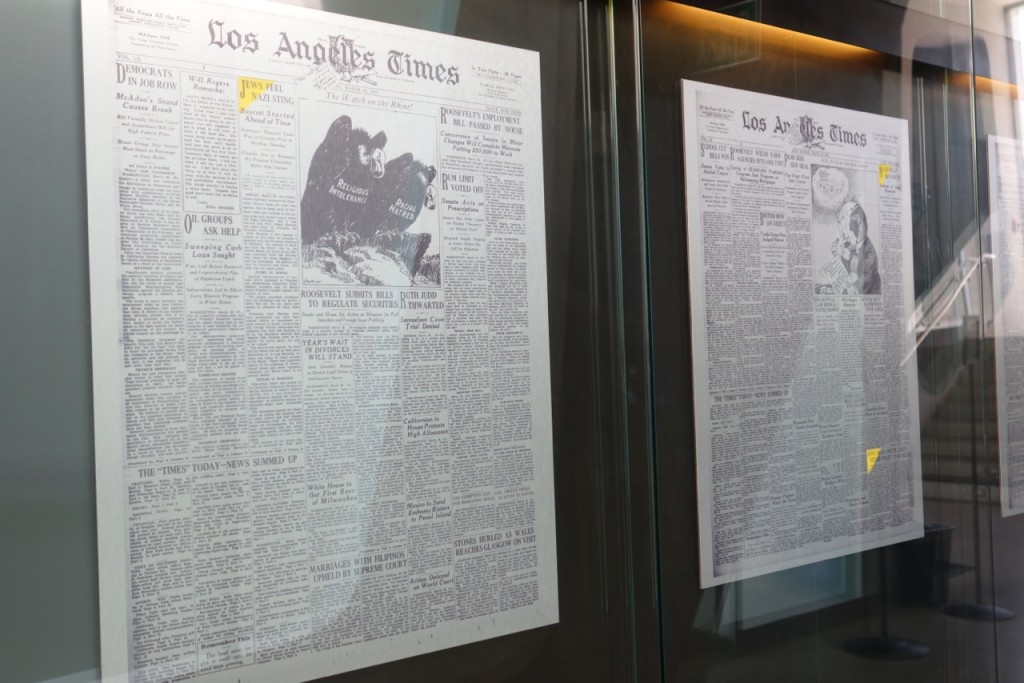
And, there are sobering illustrations of German propaganda, such as this image from a school book about how to “spot” a Jewish child.
Display cases are interactive and visitors can touch screens that elaborate on certain parts of the story.
Here is a scale model of the Sobibor death camp. Created by Thomas Blatt, one of the few Sobibor survivors, you will be able to watch video of Mr. Blatt explaining how the camp operates and how he and other prisoners staged the uprising that ultimately saved his life.
And, visitors learn of the rich creative community that congregated in Los Angeles – scores of composers and writers and artists made their way to Los Angeles, finding this town a welcoming and advantageous place to remake their lives. To this day, our city remains a promising place for immigrants to pursue a career and raise their families.
The Tree of Testimony is the final exhibit at the museum. Part monument and part informational presentation, this new digital display allows visitors the opportunity to watch recorded interviews with different survivors. This incredible video display contains all 51,000 video testimonies from survivors put together by the Shoah Foundation.
For families, the experience of listening to a Holocaust survivor is a must. Considering that this population is a precious and limited resource, it may be an experience that parents decide to seek out and share with their kids. LAMOTH guarantees dialogue with an actual Survivor, a living embodiment of history. It is an indelible experience for all.
Here is a link to directions and parking information to help with your visit.

